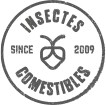Breeding insects can be made at home or inside big industrial farms. Usually exerted with passion even if it is for commercial purposes, breeding insect is a new and innovative way to save the world.
Insects are important for our ecosystem. They clean, recycle and fertilize the soil by eating dead plants and animal wastes. They even provide fertilizer by way of the wastes they themselves release, which in turn boost humus growth in the soil. Insects can also move pollen from flower to flower, pollinating them.
Insects fill an essential role in our food chain, especially as a main source of food for many other animals. Few know that fact but without them, the human race would not survive.
Domestic breeding of bugs
Breeding bugs for practical purposes
The best known reason for breeding bugs is beekeeping. Honeybees are bred for all their side products like honey, pollen, wax, royal jelly and so on. Those by-products are harvested in the most traditional way. Some can be done manually like removing honey or by using modern method like artificial insemination to increase honey production. Another sought out insect is the silkworm. Breeding silkworms is called sericulture, by the way. Silkworms are caterpillar born from the Bombyx mulberry. Harvesting its cocoon gives us a valuable fibrinous material that, once processed, is called silk.
Bugs can be bred purely beneficial for biological warfare
Crops are usually safeguarded from parasites by predator insects such as the ladybug. Ladybugs are very effective against pests and trichogram, a midge-like tiny wasp fond of gnats eggs which are a real plague for plants. Public and private laboratories have been tasked with finding ways to fight pests. And by using massive stocks of eggs or larvae, they try to find usuable hybrids able to fight radical pest infestations.
Bugs bred for educational or scientific purposes
Terrariums or vivariums specialized in insect breeding can often be found inside classrooms for easy observation of their life cycles, the different stages of their molt, their feeding method, reproduction and even death. Anthills, stick insect vivariums or articifial hive... Keeping them close allows our children to better understand and to fight any form of apprehension born from facing some insect species.
Breeding insects for the hell of it
Last but not least, breeding bugs just for the hell of it. Breeding them can be a lot of fun but it is an activity requiring thorough and conscientious work. Raising stick insects, crickets or butterflies at home must be a deliberate decision. Especially because breeding and releasing some exotic species inside our ecosystem can be illegal.
Exhaustion and boredom can set in after a while. Excitement of novelty can be a killer for amateur breeders who take the risk of being overtaken by their increasing numbers.
It requires both a personal and financial investment if you want to give the best confort to your bugs. You should be able to buy them fresh food regularly, for example. And take great care to keep their environment clean at all time.
Eating bugs, a new delicacy on the menu
In our minds, especially in Western cultures, we don't yet fully understand that insects are really edible. They may be crammed with high nutritional value, made up mostly of protein, vitamins and minerals, we still don't really get it. Even though in some cultures like in Africa, Asia and Central America, those are long known facts.
In nearly 90 different countries all around the world (more than half of the world population) edible bugs are regularely consumed. Wherever meat is expensive and scarce, bugs step up and become a viable solution for another source of protein and vitamins.
In the western hemisphere, eating bugs is still an acquired taste
In France or in across Europe, still little is known about bug diet. Some restaurants have begun to spice up their menu to make room for bugs. But that's only for connoisseurs and fin gourmets.
Ppsychological barriers are still strong. Insects are seen as dirty and carrying germs. You may have images of swarming maggots trodding over rotten food flashing in your mind still. Yet, unbeknownst from us, every year, you eat nearly 500 grams of bugs as fruit, vegetables, soups and other brick jams maybe contaminated with worms. How is that for a fun fact ?
And lately, some european countries have been starting to produce bugs for countries where they are consumed. In the Netherlands for example, bugs producers have been gathering together to produce tens of tons of mealworms as animal feed but also as human food.
The FAO has been campaigning since 2008 to develop insect farm and slow down traditionnal meat production.
The Chinese example
In China, they build gigantic factories specialized in insect breeding intended for human consumption. All that in order to feed the ever growing Chinese demands for proteins. Bamboo worms or dried larvae are the latest trend. In Chinese provincial markets, it is not uncommon to see wasp nests on shelves for a discount.
Contrary to that, some bugs are considered to be such delicacies that affording them is a real luxury, like a tarantula.
Protecting our environment:
Mass production of bugs is by far better than beef or pork in terms of air and soil pollution.
Bugs need less water and producing them doesn't release greenhouse gas emissions into the atmosphere. Each insects produce around 300 eggs each, which is very efficient. Moreover, spawning require little space.
Raising insects to feed other animals:
Reptiles, trendy pet if there were one, need several different insects species to thrive and to reach adulthood. As their owner, it is your duty to provide them as such with cockroaches, mealworms, crickets or maggots.
And as such, it can be very beneficial and far less expensive to start your own breeding farm than purchasing them at pet shop.
